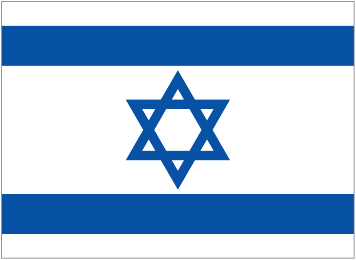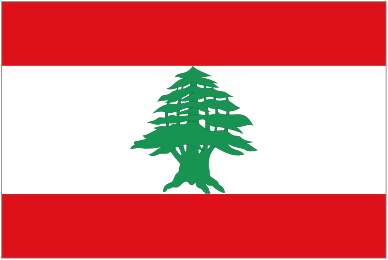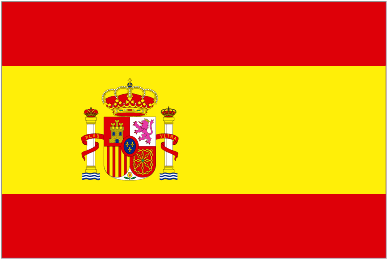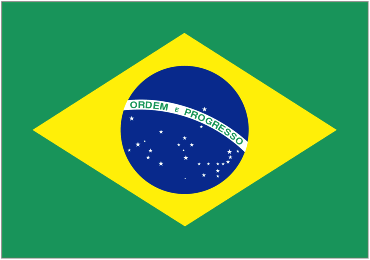Peace activities require varying degrees of planning and preparation. They are events comparable to theater performances and sports events in that the tourist must plan to be at the right place at the right time. Anniversaries occur only once a year, and meetings with individuals or local groups usually require prearrangement. Nevertheless, some tourists travel as part of well organized groups, and many local peace activities advertise their activities and welcome out-of-town participants. So it is not inconceivable that a day or week of "peace tourism" might include several of the time sensitive activities suggested by the foregoing table.
Throngs of tourists visit Geneva, Hiroshima, and UN Headquarters in New York City, but how many call themselves "peace tourists"? Probably not very many. The public visits battlefields, golf courses, cathedrals, opera houses, and football stadia, and doing so in organized groups has creatred commercial opportunities for tourism operators. The author recently received a post card advertising "military historical tours" to Vietnam, Iwo Jima, China, Philippines, Korea, Guam, France, Burma, Guadalcanal, Turkey, Normandy, Bermuda, Russia, Peleliu, Saipan/Tinian, Italy, and Tarawa -- in that order. He has also received invitations to visit Gandhian organizations in India and non-violent organizations in Palestine, but "Peace" not part of these tour descriptions. "Peace" is simply not a “brand” that the public recognizes.
Peace places are static and available to the tourist most any time. This paper focuses on monuments and museums which exist in public space and can be visited most any day of the year without prearrangement.
Some Positive & Negative Themes
Examples of
Positive Peace"Integration of
Human Society" |
Examples of
Negative Peace"Absense of
Violence" |
Abolition
Arbitration
Civil Rights
Democracy
Disarmament
Econ. Development
Education
Emancipation
Environmentalism
Food & Shelter
Gay Rights
Golden Rule
Human Rights
Indigenous Peoples
Integration
Intl. Friendship
International Law
Job Training
Justice
Liberation
Marriage Equality
Nobel Peace Prize
Non-Violence
Pacifism
Peace After War
Peace Philanthropy
Peace Poles
Peace Treaties
Peacemakers/Heroes
Public Health
Quakers/Mennonites
Racial Diversity
Reconciliation
Red Cross
Religious Freedom
Resistance
Sister Cities
Social Justice
Tolerance
UN Agencies
Women's
Rights
Workers' Rights
World Peace
| Abuse of Power
Aggression
Apartheid
Arms Race
Berlin Wall
Attrocity
Chemical Warfare
Child Abuse
Climate Change
Colonialism
Communism
Corruption
Crime & Gangs
Discrimination
Disease
Drug Trade
Eugenics
Facism & Nazism
Genocide/Removal
Holocaust/Shoah
Hunger
Inequality
Injustice
Intolerance
Lack of Water
Landmines
Nuclear Weapons
National Occupation
9/11 Attack
Pollution
Poverty
Racism
Repression
Slavery
Species Extinction
Terrorism
Totalitarianism
Torture
War
War Crimes
Unemployment
Unfair Prosecution
Violence
|
II. What are peace monuments and museums?
There are several answers to this question.
The first answer is easy -- most anything named for "peace." But this answer is deceptive. "Peace" is a concept and ideal recognized by many different cultures, and the word "peace" has been used in many different meanings. What Ronald Dworkin said about "religion" applied equally well to "peace:" "[It is] an interpretive concept. That is, people who use the concept do not agree about precisely what it means: When they use it they are taking a stand about what it should mean." Does the tranquil Japanese "Peace Garden" at UNESCO headquarters in Paris have the same meaning as the aggressive "Goddess of Peace" (who is breaking a sword and stomping on the head of a soldier) in Karlstad, Sweden?
Even though the aspiration for "peace" may be universal, peace tourists soon learn to encounter wide variation in the many meanings and interpretations of the word "peace." And this accounts for some of the fascination of peace tourism.
The second answer is to include monuments and museums which represent the same values as "peace" but, for one reason or another, do not happen to include "peace" in their names. In 1913, the "Peace Palace" was dedicated in The Hague to be home of the Permanent Court of Arbitration, and, in 1952, United Nations headquarters opened in New York City without being named for "peace" but is certainly no less a "peace monument" than the palace in The Hague. In Hiroshima, many monuments and museums related to nuclear destruction in 1945 are named for "peace" (heiwa), but in Europe, the many monuments and museums related to the Holocaust are not specifically named for "peace" but represent "peace" in the very same way as "peace" monuments in Japan.
The third answer is to consider the various meanings of the word "peace," and the most obvious meaning is the absence of war. Many peace monuments have been constructed to celebrate the cessesion of hostilities and the promise of prosperity and progress in the post-war era. The phrase "peace museum" usually connotes an "anti-war" museum which exhibits the evils of war and the benefits of "non-war."
But modern scholarship has tended to define "peace" ever more broadly. As noted by Professor Ikuro Anzai (founder of the Kyoto Museum for World Peace at Ritsumeikan University in Japan), "peace" is no longer defined as the "absence of war" but as the "absence of violence," and violence in this context is understood as "causes to prevent people from making full use of their ability."
"Peace monuments" represent this expanded definition in two different ways. Some peace monuments decry not only war but genocide, colonialism, racism, or any of the many other evils which prevent the attainment of human potential. To simplify, we might say that these monuments emphasize negative themes of peace. They deplore the tragedies of the past, warn about the causes of the tragedies, and project the powerful message of "never again." The other kind of peace monument celebrates the positive themes of peace -- human rights, reconciliation, the acts of individual peacemakers (or peace heroes), and so forth.
On the right side of this page is a table listing 43 examples of each of the two kinds of peace monuemnts. The two lists are long but incomplete. They reflict Johan Galtung's 1964 definitions of negative peace ("absence of violence, absence of war") and positive peace ("the integration of human society").
Like all monuments, museums are physical, permanent, and symbolic. But they are also living institutions with complexity, multiple programs, and the capacity to adapt to changing circumstances. In 2005, the International Network of Peace Museums changed its name to International Network of Museums for Peace. Although INMP's institutional membership and out-reach programs have not yet greatly expanded in keeping with the broader definition, the concept of "museum for peace" has nevertheless introduced "peace tourism" to hundreds of museums not named for "peace" but related to any of the negative or positive themes listed in the table on the right.
III. Where is peace tourism most likely to take place?
Peace tourism already takes place in cities which have numerous peace monuments and museums: Atlanta, Belfast, Berlin, Chicago, Geneva, Jerusalem, London, Nagasaki, New Delhi, New York City, Ottawa, Philadelphia, The Hague, Tokyo, and Vienna.
At least a dozen cities have created peace trails by listing peace monuments and museums in a brochure or website for the information of tourists: Amsterdam, Atlanta, Bradford, Bristol, Christchurch, Coventry, Geneva, Indianapolis, Leeds, London, Manchester, Montgomery, Rotterdam, and Wellington.
In the United States, long-distance trails have been established to trace the routes of the 1838-1839 Cherokee "Trail of Tears," the circa 1850 "Underground Railroad" of escaping slaves, and the 1965 voting rights march from Selma to Montgomery, Alabama.
Michelin guides used to rank principal sights with three, two, or one stars. Here are a dozen peace tourism destinations which, in the author's opinion, deserve three stars ("Worth a journey"):
Top Dozen
Peace Tourism Destinations
(click links for details)
| Notable Peace Institutions
(with year of creation)
| Approx.
Number
of Peace
Monuments
| Including
This
Number of
Museums
 Hiroshima, Japan Hiroshima, Japan
| 1954 - Hiroshima Peace Memorial Park
1955 - Hiroshima Peace Memorial Museum
2002 - National Peace Memorial Hall for the Atomic Bomb Victims
| 69��
| 3
 Nagasaki, Japan Nagasaki, Japan
| 1955 - Nagasaki Peace Park
1955 - Nagasaki Atomic Bomb Museum
2002 - National Peace Memorial Hall for the Atomic Bomb Victims
| 48
| 3
 Jerusalem, Israel Jerusalem, Israel
| 1953 - Yad Vashem Historical Memorial
2005 - Holocaust History Museum
| 33
| 2
 New York City, New York, USA New York City, New York, USA
| 1952 - United Nations Headquarters
1997 - Museum of Jewish Heritage - A Living Memorial to the Holocaust
2004 - New York Tolerance Center
| 22
| 4
 Atlanta, Georgia, USA Atlanta, Georgia, USA
| 1968 - Martin Luther King, Jr., Center for Nonviolent Social Change
1980 - Martin Luther King, Jr., National Historic Site (NPS)
1982 - Jimmy Carter Library & Museum
| 10
| 3
 Geneva, Switzerland Geneva, Switzerland
| 1936 - Palais des Nations / Palace of Nations (UNO Geneva)
1946 - League of Nations Museum
1988 - International Red Cross & Red Crescent Museum
| 9
| 2
 Okinawa, Japan Okinawa, Japan
| 1972 - Okinawa Peace Memorial Park
1975 - Okinawa Prefectural Peace Memorial Museum
| 9
| 1
 The Hague, Netherlands The Hague, Netherlands
| 1913 - Vredespaleis / Peace Palace (Carnegie Stichting / Foundation)
2012 - Peace Palace Visitors Centre
| 8
| 1
 Montgomery, Alabama, USA Montgomery, Alabama, USA
| 2000 - Rosa Parks Library & Museum (Troy University)
2005 - Civil Rights Memorial Center (Southern Poverty Law Center)
| 6
| 2
 Boissevain, Manitoba, Canada Boissevain, Manitoba, Canada
 Dunseith, North Dakota, USA Dunseith, North Dakota, USA
| 1932 - International Peace Garden
| 5
| -
 Waterton Lakes, Alberta, Canada Waterton Lakes, Alberta, Canada
 Glacier National Park (NPS), Montana, USA Glacier National Park (NPS), Montana, USA
| 1932 - Waterton-Glacier International Peace Park
| 2
| 2
 Magnor, Norway Magnor, Norway
 Eda, Sweden Eda, Sweden
| 1914 - Morokulien Fredsmonument / Peace Monument
1996 - Infosenter / Information Centre
| 1
| -
| | | | | | | | | | | | |
The twelve destinations in the foregoing table represent only seven meanings of "peace:" Civil rights, international friendship, international law, peace after war, peace philanthropy, peacemakers, and UN agencies. All of their themes are positive except for the theme of nuclear weapons as represented by Hiroshima and Nagasaki. It is probably not surprising that the concentrations of peace monuments and museums occur where significant peace events have taken place.
The case of Okinawa is interesting. Its principal institutions are named for "peace." Yet Okinawa is a battlefied. Why is Okinawa a "peace" destination and the Normandy Beaches a "war" destination? Are monuments on Okinawa named for "peace" by analogy to the nuclear sights on the larger Japanese islands? Sometimes there's a fine line between the memorialization of war and peace, and the particular presentation of the sight can be significant. Okinawa's largest monument (the Cornerstone of Peace) is not only named for "peace," but it lists the names of all casulaties of the Battle of Okinawa -- military and civilian, Japanese and foreign -- not just the casualties of one nation as on Maya Lin's famous Vietnam Veterans Memorial in Washington, DC.
IV. Can peace tourism take place in unlikely places?
The foregoing section named a number of cities and "top" destinations where peace tourism takes place because of peace monument and museum concentration. But peace monuments and museums also exist in small places, and indeed they are sometimes scattered over wide areas. A companion paper, "From the Ohio River to the Detroit River: A Case Study of Peace Tourism (or Lack Thereof)," considers in detail a 360 mile (583 km) corridor in the United States and Canada. In this study area, 100 peace monuments (including 15 museums for peace) in ten different urban areas represent twenty positive and ten negative themes of peace tourism. One of the "problems" identified by the case study is that the traveling public probably does not recognize that so many themes have something in common -- the "interpretive concept" of "peace."
Two star ("Worth a Detour") and one star ("Interesting") peace sights (to borrow Michelin terminology) exist in many countries but are not evenly distributed around the world. The following table attempts to estimate the potential for peace tourism in 30 selected countries. The data presented are extracted from on-line data sets (which can be consulted by clicking links embedded in line #2 of the table). Each source is presumed to be reliable, but the results are inconsistent because definitions are imprecise and because researchers have sought information in different ways.
The table contains data for the number of peace museums, museums for peace, human rights museums, "sites of consicence," peace monuments, Holocaust memorials and museums, and peace studies programs in each of the 30 countries. The totals at the right side of the table are in rough proportion to the number of "places that authentically represent peace stories and peacemakers of the past." Except for one person's list of 112 college and university peace studies programs, the totals do not accurately reflect the number of "activities that authentically represent peace stories and peacemakers of the present."
30 Selected
Countries
| Peace
Museums
| Museums
for
Peace
| Museums
for
Peace
| FIHRM
Partners &
Supporters
| ICSC
Founders
& Inst.
Members
| Peace
Monuments
| Holocaust
Memorials
&
Museums
| College &
University
Peace
Studies
Programs
| Total
Places
(despite
double
counting)
| Popu-
lation
(1000's)
| Persons
per
Place
| Places Include
(both positive &
negative examples)
| Data Sources Click links
to see data sets.
| Wikipedia
| K.Yamane
(World)K.Yamane
(Japan)
| Author's
Website
| Federation
of Intl.
Human Rts.
Museums
(FIHRM)
| International
Coalition
of Sites of
Conscience
(ICSC)
| Author's
Website
| Wikipedia
| West-
moreland
-White
| Calcu-
lation
| Wikipedia
| Calculation
(used to
rank order
this table)
 Israel Israel
| -
| -
| 4
| -
| -
| 158
| 7
| 1
| 170
| 8,002
| 47,070
| Yad Vashem
|  New Zealand New Zealand
| -
| -
| -
| 2
| -
| 36
| -
| -
| 38
| 4,467
| 117,553
| Nuclear Free Zone
|  Netherlands Netherlands
| 5
| 9
| 18
| 1
| -
| 65
| 5
| -
| 103
| 16,784
| 162,951
| Peace Palace
|  Switzerland Switzerland
| -
| 4
| 5
| -
| -
| 40
| -
| -
| 49
| 8,037
| 164,020
| UNO Geneva
|  Austria Austria
| 1
| 3
| 5
| -
| -
| 35
| 3
| 1
| 48
| 8,489
| 176,854
| UNO Vienna
|  UK UK
| 2
| 3
| 14
| 16
| 1+4
| 266
| 4
| 5
| 315
| 63,182
| 200,578
| Reformers
|  Norway Norway
| 1
| 3
| 3
| 2
| 0+1
| 12
| -
| 1
| 23
| 5,051
| 219,609
| Morokulien
|  USA USA
| 5
| 18
| 227
| 2
| 6+67
| 958
| 35
| 82
| 1,400
| 315,779
| 225,556
| UN Headquareters
|  Canada Canada
| -
| -
| 13
| -
| 0+3
| 126
| 3
| 6
| 151
| 35,056
| 232,159
| UN Peacekeeping
|  Belgium Belgium
| 2
| 3
| 6
| -
| 0+2
| 25
| 1
| -
| 39
| 11,151
| 285,923
| Edith Cavell
|  Sweden Sweden
| 3
| 2
| 4
| -
| 0+1
| 13
| 1
| 2
| 26
| 9,567
| 367,962
| Morokulien
|  Ireland Ireland
| -
| -
| -
| -
| -
| 9
| -
| 3
| 12
| 4,585
| 382,083
| Reconciliation
|  Japan Japan
| 20
| 34
| 29
| -
| 0+1
| 201
| -
| -
| 285
| 127,340
| 446,807
| Hiroshima/Nagasaki
|  Costa Rica Costa Rica
| -
| 1
| 1
| -
| -
| 7
| -
| 1
| 10
| 4,667
| 466,700
| UN University
|  France France
| 1
| 4
| 20
| 2
| 0+1
| 52
| 54 ?!
| 2
| 136
| 65,619
| 482,493
| UNESCO
|  Germany Germany
| 5
| 12
| 27
| 1
| 0+1
| 114
| 3
| 1
| 164
| 82,029
| 500,177
| Nazi desertions
|  Lebanon Lebanon
| -
| -
| -
| -
| 0+1
| 5
| -
| 1
| 7
| 4,324
| 617,714
| Sabra & Shatilla
|  Australia Australia
| -
| -
| 1
| 2
| 0+1
| 26
| 2
| 4
| 37
| 23,009
| 621,865
| Nobel Peace Walk
|  Poland Poland
| -
| 5
| 13
| 1
| 0+3
| 12
| 7
| -
| 41
| 38,534
| 939,854
| Holocaust
|  Greece Greece
| -
| -
| 1
| -
| -
| 7
| 1
| -
| 9
| 10,815
| 1,201,667
| Olympic Games
|  Spain Spain
| 2
| 2
| 4
| -
| 0+4
| 24
| -
| 1
| 37
| 47,060
| 1,271,892
| Guernika
|  South Africa South Africa
| -
| 1
| 10
| -
| 2+5
| 18
| 3
| -
| 39
| 51,771
| 1,327,462
| Apartheid
|  South Korea South Korea
| 1
| 6
| 5
| -
| 0+1
| 24
| -
| -
| 37
| 50,004
| 1,351,459
| Demilitarized Zone
|  Italy Italy
| 2
| 2
| 8
| 1
| 1+4
| 23
| 3
| -
| 44
| 59,500
| 1,352,272
| Pax Romana
|  India India
| 2
| 3
| 11
| -
| 0+2
| 52
| -
| -
| 70
| 1,210,193
| 1,728,847
| Mahatma Gandhi
|  Mexico Mexico
| -
| -
| 1
| 2
| 0+3
| 24
| -
| -
| 30
| 112,337
| 3,744,567
| Amistad/Friendship
|  Russia Russia
| -
| -
| 5
| -
| 2+4
| 24
| -
| -
| 35
| 143,370
| 4,096,286
| Gulags
|  Turkey Turkey
| -
| -
| -
| -
| -
| 10
| -
| 1
| 11
| 75,627
| 6,875,181
| Atatürk's "Peace at home"
|  Brazil Brazil
| -
| -
| 3
| -
| 0+2
| 11
| 1
| -
| 17
| 193,947
| 11,408,647
| Tortura Nunca Mais
|  China China
| 1
| 12
| 4
| -
| -
| 19
| -
| -
| 46
| 1,354,040
| 29,435,652
| Japanese Aggression
| | 30 Country Total
| 53
| 127
| 442
| 32
| 12+110=122
| 2,396
| 133
| 112
| 3,417
| 4,144,336
| | 30 Country Average
| 1.8
| 4.2
| 14.7
| 1.1
| 4.1
| 79.9
| 4.4
| 3.7
| 113.9
| 138,145
| 1,212,862
| | 212 Country Total
| -
| 27
| 49
| 14
| 5+47=52
| Many
| 14
| -
|
| 2,869,080
| | 242 = World Total
| 53
| 154
| 491
| 46
| 17+157=174
| 2,396+Many
| 147
| 112
|
| 7,013,416
| 30 Selected
Countries
| Peace
Museums
| Museums
for
Peace
| Museums
for
Peace
| FIHRM
Partners &
Supporters
| ICSC
Founders
& Inst.
Members
| Peace
Monuments
| Holocaust
Memorials
&
Museums
| College &
University
Peace
Studies
Programs
| Total
Places
(despite
double
counting)
| Popu-
lation
(1000's)
| Persons
per
Place
| Places Include
(both positive &
negative examples)
| | |
Conclusions
(1) Tourists travel to play golf, to take adventure tours, and to visit battlefields, but relatively few of them seek out peace places and peace activities. An obvious reason is that the public is very largely unaware of the tourism value of peace places and peace activities.
(2) The public is in fact unaware of "peace" as a category of tourism interest and of the many different meanings and themes of “peace.”
(3) University peace studies departments, peace activist associations, and other organizations which make a conscious effort to promote "peace" do so largely in isolation from the public at large.
(4) The tourism industry (airlines, hotels, tourism promotion agencies, and travel writers) also overlook "peace" as tourism destination. Peace places and activities are not advertised or shown in popular guide books.
(5) There is virtually no peace tourism industry today.
(6) To create “peace tourism,” the public needs to become increasingly aware of the many meanings of “peace” and of the many interesting “peace travel” options.
Recommendations
(1) Find wasys for stakeholders of the tourism industry and of peace organizations to interface and create innovative ways to market peace tourism to the traveling public of all countries.
(2) Strengthen the International Network of Museums for Peace (INMP), the Federation of International Human Rights Museums (FIHRM), the International Coalition of Sites of Conscience (ICSC), and other non-governmental organizations which ary trying to bring about cooperation and coordination among museums for peace and other peace places.
(3) Encourage peace activist organizaitons and university peace studies departments to reach out to peace tourists and to welcome them into local peace activities.
(4) Publish directories (in print and on-line) of peace places, peace sights, and peace destinations. Cretate a multilingual, searchable on-line directory of peace activities taking place in all countries throughout the year.
(5) Create a peace tourism "brand" or logo which could be used to identify organizations sponsoring study tours and workshops, peace studies departments and peace activists willing to meet with the public, the sites of peace achievements, and of course peace monuments and museums.
(6) Redefine and reinstate the "Banner of Peace" originally promoted by Russian artist Nicholas Roerich to identify and protect places of important cultural heritage.
(7) Ensure that the public learns the peace stories (and peace tourism possibilities) of cities with peace monument and museum concentration, for example (in alphabetical order) Ahmedabad, Atlanta, Belfast, Berlin, Geneva, Hiroshima, Jerusalem, Kyoto/Osaka, London, Nagasaki, New Delhi, New York City, Philadelphia, The Hague, San Juan (Costa Rica), Tokyo, Vienna, and Washington, DC.
(8) Promote a "grand tour" (and publish a companion coffee table book) which would include well established peace sights in key places such as Atlanta (for Martin Luther King, Jr.), Auschwitz, Bhutan (for Gross National Happiness), Buenos Aires, Czech Republic (for the Cairn of Peace and Three Emperors Museum), Geneva, Guernika, Hiroshima, Jerusalem (for Yad Vashem and the West Bank), New Delhi (for Mahatma Gandhi), New York City (for UN Headquarters), and The Hague (for the Peace Palace).
Bibliography
Anzai, Ikuro (October 2008), "Definition of peace, peace museum and museum for peace with reference to peace-related museums in Asia," pp. 109-122. Published in "Anzai, Ikuro, et al, ed. by (October 2008), "Museums for peace: Past, present and future," Organizing Committee, Sixth International Conference of Museums for Peace, Kyoto Museum for World Peace, Ritsumeikan University, Kyoto (Japan).
Apsel, Joyce A. (2008), "Peace & human rights education: The UN as a museum for peace," pp. 37-48, in Anzai, Ikuro, et al, ed. by (2008), "Museums for peace: Past, present and future," Organizing Committee, Sixth International Conference of Museums for Peace, Kyoto Museum for World Peace, Ritsumeikan University, Kyoto (Japan). Describes the pedagogic value of peace monuments at UN headqurters in New York City. Apsel is Master Teacher in the General Studies Program at New York University, New York, NY (USA).
Baber, Zonia (1948), "Peace Symbols," 96 pages, paperback, published by Womens International League for Peace and Freedom (WILPF), Room 635, 410 S. Michigan Avenue, Chicago 5, Illinois, or 2006 Walnut Stree, Philadelphia 3, Pennsylvania, price $1.00. Borrowed from Illinois State Library. Dedication: "Miss Baber dedicates this book to the cause of World Peace, and on her eighty-sixth birthday presents it as a gift to the WILPF." Describes 40 peace monuments. Includes "Supplementary Materials" on "Early Peace Treaties Made by the U.S. Government" & 2 "verses concerning racial equality."
Bennett, James Richard (1999), "Centers, Museums, and Public Memorials for Nonviolent Peacemaking in the US: A Visitors' Guide," PeaceWork Magazine, American Friends Service Committee, Philadelphia, May. Click here for on-line text. Bennett is Professor of English Emeritus, University of Arkansas, Fayetteville, Arkansas (USA).
Bennett, James Richard (2001), "Peace movement directory: North American organizations programs, museums and memorials," McFarland & Co., Jefferson (North Carolina), pp. 310. Covers peace monuments in the USA, Canada & Mexico & at the UN in New York City. Contains a "Canadian Introduction" by John MacLeod. Bennett is professor emeritus of English, University of Arkansas. MacLeod is Director, École d'architecture de paysage, Université de Montréal. Click here for more information.
Carrier, Jim (2004), "A traveler's guide to the civil rights movement," Harcourt, Orlando etc., pp. 384. Click here for more information.
Doss, Erika (2010), "Memorial Mania: Public Feeling in America," University of Chicago Press," pp.480. In the past few decades, thousands of new memorials to executed witches, victims of terrorism & dead astronauts, along with those that pay tribute to civil rights, organ donors & the end of Communism have dotted the American landscape. Equally ubiquitous, though until now less the subject of serious inquiry, are temporary memorials -- spontaneous offerings of flowers & candles that materialize at sites of tragic & traumatic death. Doss argues that these memorials underscore our obsession with issues of memory & history & the urgent desire to express those issues in visibly public contexts." Doss is professor of American studies at the University of Notre Dame & the author of "Benton, Pollock, and the Politics of Modernism: From Regionalism to Abstract Expressionism."
Dworkin, Ronald (April 4, 2012), "Religion Without God," New York Review of Books.
Chugoku Shimbun (2011), "Peace Museums of the World," Hiroshima Peace Media Center, Hiroshima (Japan). Essays about 61 museums - 16 in Japan, 8 in USA, 5 in Germany, 3 in Netherlands, 3 in UK, 2 in China, 2 in France, 2 in India & 2 in South Korea. Plus one each in Australia, Austria, Bangaladesh, Cambodia, Costa Rica, Czech Republic, Iran, Italy, Kenya, Norway, Poland, Rwanda, Singapore, Spain, Sweden, Switzerland & Uzbekistan. "These peace museums were originally introduced in the morning edition of the Chugoku Shimbun [newspaper]. The English versions on this website include the full text of the original articles."
Dupre, Judith (2007), "Monuments: America's history in art and memory." Random House, New York, pp. 252. Thirty-seven chapters covering some of the biggest US monuments, e.g. Liberty Bell, Lincoln Memorial, and Vietnam Veterans Memorial.
Flores, Thomas Vincent (2008), "Broadening the purview of 'peace': The challenge & promise of peace-related museums and centers in the United States," pp. 123-139, in Anzai, Ikuro, et al, ed. by (2008), "Museums for peace: Past, present and future," Organizing Committee, Sixth International Conference of Museums for Peace, Kyoto Museum for World Peace, Ritsumeikan University, Kyoto (Japan). Flores is Visiting Assistant Professor, Peace-building and Conflict Transformation Practices, Emory University, Atlanta, Georgia (USA).
Gilbert, Martin (April 15, 1999). "Holocaust Journey: Traveling in Search of the Past," Columbia University Press, New York, pp. 468. "Interweaves present-day experiences, personal memories & historical accounts. More than 50 photographs taken over the course of this unique voyage are included, among them shots of Berlin, at the spot of the 1933 book burning; the railway line to Auschwitz; Oskar Schindler's factory in Crakow, Poland; and memorial stones from Treblinka. Together with 55 maps, these illustrations add an arresting visual dimension to this powerful story."
Gittings, John (2012), "The Glorious Art of Peace: From the Iliad to Iraq," Oxford University Press, pp. 320. "The first comprehensive history of the arts of peace, from ancient times to the 21st century." Gittings is a Guardian correspondent known for his work on China & the Cold War.
Gough, Paul J. (2000), "From Heroes' Groves to Parks of Peace: Landscapes of remembrance, protest and peace," Landscape Research, vol. 25, no. 2, pp. 213-228. "After 1945 there was a considerable shift in the landscapes of war: Memorial schemes more often took a pragmatic & utilitarian form, & desolated cities such as Hiroshima (and to a lesser extent Dresden & Coventry) became the cornerstone for anti-war movements in the late 1950's & 1960's. This period saw the emergence of a symbolic landscape of protest, which often co-existed uncomfortably as a place of tourism."
Grewal, Baljit Singh (August 30, 2003), "Johan Galtung: Positive and Negative Peace," pp. 7, on-line at http://upeaceap.org/hando_upfiles/FCPC_RM_06_1.pdf. Grewal is an independent scholar and entrepreneur formerly affiliated with the School for Social Science, Auckland University of Technology.
Lollis, Edward W. (2008), "Peace monuments." In Young, Nigel, ed. by, (2010) "International Encyclopedia of Peace: Global conflict, transformation and nionviolent change," Oxford University Press, Oxford & New York, 4 volumes (2,176 pages). On-line text with illustrations.
Lollis, Edward W. (June 2013), "Monumental Beauty: Peace Monuments and Museums Around the World," Peace Partners International, Inc., Knoxville, Tennessee (USA), pp. 75. Illustrated with 416 peace monuments & museums. Available from Amazon.com and Barnes & Nobel in hardback, softcover & eBook editions.
Lollis, Edward W. (September 3, 2013), "A century of Peace Monuments and Museums," Symposium on "Celebrating Peace Philanthropy and Furthering Peace Education in the Footsteps of Andrew Carnegie," International Network of Museums for Peace (INMP), Peace Palace, The Hague (Netherlands). In preparation
Moufakkir, Omar, & Ian Kelly, ed. by (May 2010), "Tourism, Progress and Peace," Commonwealth Agricultural Bureaux International (CABI), Wallingford, Oxfordshire (England), pp. 256. Contains 16 papers, including "The Atlanta Peace Trails Experience" by Gail Lash, Andrea Kay Smith & C. Smith.
Roerich Pact and Banner of Peace Committee (1947), "The Roerich Pact and the Banner of Peace," New York, City, New York (USA), 56 pages. Click here for on-line text. Click here for special webpage about Russian artist Nicholas Roerich [1874-1947].
Savage, Kirk (2002), "The Past in the Present: The Life of Memorials,” in Reading Rhetorically: A Reader for Writers, ed. by John C. Bean, et al. (New York: Longman), pp. 5. Previously appeared in Harvard Design Magazine (Fall 1999). Click here for on-line text.
Sevcenko, Liz (2004), "The Power of Place: How historic sites can engage citizens in human rights issues," New Tactics in Human Rights Project, Center for Victims of Torture (CVT), Minneapolis, Minnesota (USA), pp. 20. Sevcenko is Vice President for Interpretation, Lower East Side Tennament Museum, and Coordinator, International Coallition of Sites of Conscience, both in New York, New York (USA).
van den Dungen, Peter et al, ed. by (1998), "Peace Museums Worldwide," United Nations Publications on Peace, Geneva (Switzerland). "League of Nations Archives, Geneva, in Association with the Department of Peace Studies, University of Bradford," 79 pages + annex on UN publications. Describes 62 museums & museum projects in 16 countries. Contains texts by Vladimir Petrovsky, Ursula-Maria Ruser, Peter van den Dungen & Anatoly Ionesov.
van den Dungen, Peter (2005), 'Monuments of a Uniting Europe', in Volker Rodekamp et al, eds., Wissenschaftliches Colloquium: Europaeische Nationaldenkmale im 21. Jarhundert - Nationale Erinnerung und Europaeische Identitaet / Academic Colloquy: European National Monuments in the 21st Century - National Memory and European Identity, Stadtgeschichtliches Museum [City History Museum], Leipzig (Germany), pp 129-139.
van den Dungen, Peter (2008), "Cities of Peace." In Young, Nigel, ed. by, (2010) "International Encyclopedia of Peace: Global conflict, transformation and nionviolent change," Oxford University Press, Oxford & New York, 4 volumes (2,176 pages), vol. 1, pp. 296-298.
Wilson, Charles Reagan (March 26, 2009), "Routes of Reconciliation: Visiting Sites of Cutural Trauma in the U.S. South, Northern Ireland, and South Africa,", Southern Spaces, 4 pages. Wilson is Chair of History & Professor of Southern Studies, University of Mississippi.
Winstone, Martin (2010), "The Holocaust Sites in Europe: An Historical Guide," I.B. Tauris, London & New York, pp. 438, with maps by Martin Gilbert. "First comprehensive guide to these sites... Contains all major Holocaust sites in Europe, from Belgium & Belarus to Serbia & Ukraine..., notorious concentration & death camps, such as Auschwitz & Ravensbruck, but also less well known examples, such as Sered' in Slovakia..., detailed descriptions of massacre sites, as well as the ghettos, 'Euthanasia' centres and Roma & Sinti sites which witnessed similar crimes..., [and] extensive reference to the many museums & memorials which commemorate the Holocaust." Winstone is a writer & teacher who undertakes educational work for the Holocaust Educational Trust. He lives in Oxford (England).
Yoshida, Takashi (June 5, 2007), Remembering War, Commemorating Colonialism: War and Peace Museums in Japan, China, Taiwan, and South Korea, U.S, Institute of Peace (USIP), Washington, DC (USA).
Young, Antonia (2008), "Peace parks." In Young, Nigel, ed. by, (2009) "International Encyclopedia of Peace: Global conflict, transformation and nionviolent change," Oxford University Press, Oxford & New York, 4 volumes (2,176 pages).
About the Author
Edward W. Lollis was a career U.S. Foreign Service Officer specializing in Africa, international energy policy, and development economics. He studied at Yale University, Princeton University, the University of Wisconsin Madison and the University of Melbourne in Australia. He worked in Canada, the Dominican Republic, England, France, Ivory Coast, Nigeria, Rwanda, and the USA. After retiring from the Department of State, he was Executive Secretary of the U.S. Committee for the Bicentennial of the Declaration of the Rights of Man and of the Citizen and then worked as a geographic analyst. Since 2001, he has written or lectured about peace monuments and museums for the Oxford International Encyclopedia of Peace, the Peace and Justice Studies Association, the International Network of Museums for Peace, and Rotary International. He maintains an on-line database of "Peace Monuments Around the World" (at http://www.peacepartnersintl.net) and recently published "Monumental Beauty: Peace Monuments and Museums Around the World."

